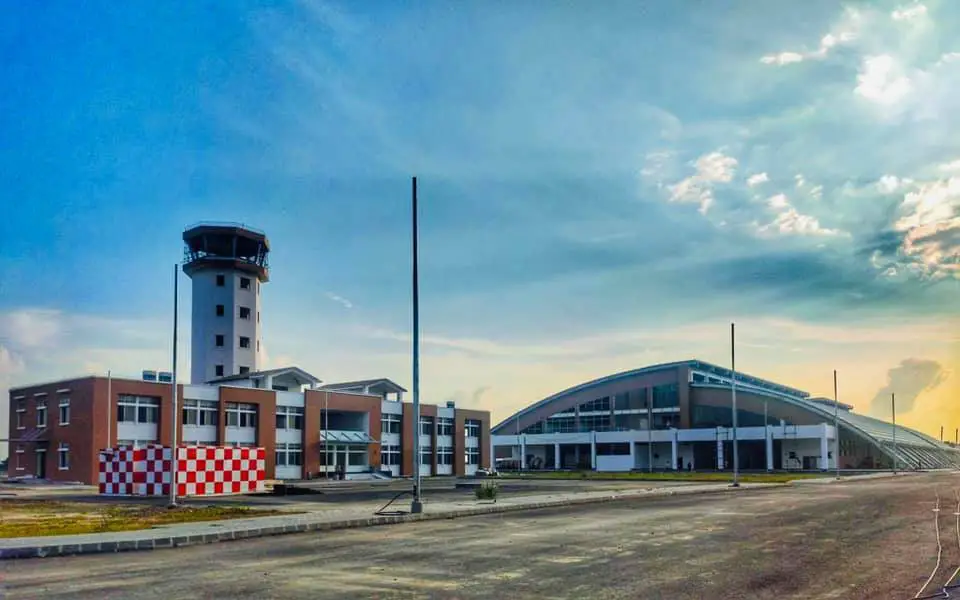Gautam Buddha International Airport (GBIA), the second international airport of Nepal is in its final phase of completion. Ministry of Culture Tourism and Civil Aviation (MoCTCA) has scheduled a calibration flight on February 21 for which necessary preparations are going on.
A four-member technical team from AEROTHAI (Aeronautical Radio of Thailand) arrived in Nepal a couple of weeks ago for ground, airport equipment and runway inspection. American Technical team will also arrive soon for further assistance.
The calibration flight at GBIA will be operated by an Austrian company and the calibration aircraft is scheduled to arrive next week.
After a successful calibration flight, an aircraft (probably Airbus A320) owned by Nepal Airlines will conduct a test flight at the airport located at Bhairahawa.
MoCTCA Minister Prem Bahadur Ale committed the Gautam Buddha International Airport will initiate operation from the upcoming Buddha Jayanti.
What is Calibration Flight?
It is vital for a new airport to conduct a calibration flight because it ensures navigation equipment, radar systems and all installed airport equipment are working properly. This flight approves or disapproves the operation of a newly built airport.
A calibration plane is required to operate flight calibration in which flight testing equipment is installed.

For instance, we can see the Beechcraft King Air 350I plane. This aircraft can be used for calibration flight because it features outstanding range and excellent handling characteristics.
Companies specializing in calibration flight install Automatic Flight Inspection System (AFIS) on the calibration aircraft. The AFIS collects important data and metrics which can be used to verify whether the airport equipment and navigational aids are working correctly or not.
AFIS inspects the following systems at the airport.

- Primary and Secondary Surveillance Radar
- Ground Navigational Aids
- Area Navigation (RNAV/RNP)
- Precision Approach Radar
- Instrument Landing System (ILS)
- VOR (VHF Omnidirectional Range) Approach
- (VOR/Distance Measuring Equipment) VOR/DME Equipment
- Non-Directional Beacon (NDB)
- Precision Approach Path Indicator (PAPI)
- Visual Approach Slope Indicator (VASI)
- Standard Instrument Procedures (SIPs) and various other inspections.
A calibration plane takes off from the airport and flies to various flight levels for flight calibration procedures. The AFIS system on the plane interacts with the airport equipment and collects data. During this process, the technical team communicate with Air Traffic Controllers and other technical teams on the ground to verify the tests.
After completion of the test calibration flight, the technical team will review and analyze data generated by AFIS. With in-depth review and technical analysis, the team will approve a new airport for flight operation if all tests are passed.
This is how a new airport or renovated airport gets a green signal for flight operation after a successful calibration flight.
Let’s wish the successful calibration flights happen soon at GBIA and we will be able to witness international flights from the second international airport after Tribhuvan Int’l Airport (TIA).
With the operation of GBIA, the flight congestion at TIA will ease and more international flights can be conducted. Besides, the locals and tourists will be highly benefitted.
About GBIA
China’s Northwest Civil Aviation Company started the GBIA project with an estimated budget of Rs6.22arba.
The airport has already acquired 4 Rosenbauer 6X6 Panther aviation fire trucks for emergency rescue and firefighting purposes.
GBIA, the national pride project consists of two projects namely ICB01 and ICB02. ICB01 includes all the primary equipment installation whereas ICB02 includes the installation of technological equipment that includes Communication, Navigation, and Surveillance (CNS), DVOR, DME navigation equipment, Weather equipment.
The Gautam Buddha International Airport project was initially scheduled to be completed by the end of the year 2017 however, the project went through various disruptions including the devastating earthquake of April 2015, the economic blockade imposed by India, and various other confrontations.





